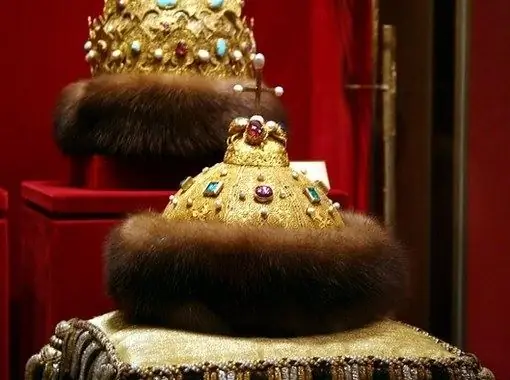- Author Antonio Harrison [email protected].
- Public 2023-12-16 07:44.
- Last modified 2025-01-22 21:44.
Beginning in the 10th century, the Russian land split into many lands, called principalities, at the head of which were rulers - princes. Someone ruled skillfully and for the benefit of the living peoples. Someone was remembered only for outrages, bribery and theft. But there are several Russian princes who have made the greatest contribution to the history of Russia.

Grand Duke Vladimir Saint (Basil)
He was the son of the Kiev prince Svyatoslav, an experienced and courageous warrior who fought with the Khazars and kosogs. He was left an orphan early and began to reign in Novgorod. He was supported by his mother's uncle Dobrynya. Due to his low origin (Vladimir's mother was a slave), he had to endure disrespect from more eminent relatives. Under these conditions, Vladimir was forced to rule harshly, subjugating more and more lands. The chroniclers even mentioned the prince's excessive cruelty and licentiousness, emphasizing his rule before the adoption of Christianity. The main act of Vladimir should be considered the rooting of the Christian faith in Russia and the increase in the number of literate people during this period. New cities appeared under the auspices of the prince, and in them magnificent temples, including stone ones. Builders and artists from Greece were called to Russia. Unfortunately, in domestic politics, Vladimir made a mistake when, as was the custom of those years, he endowed his numerous sons with inheritance, which led to the fragmentation and weakening of the Russian lands.
Grand Duke Yaroslav the Wise
According to some historical sources, one of the sons of Prince Vladimir was born from the Polovtsian princess Rogneda. He was in poor health since childhood, paralyzed. But he managed to overcome the illness. After the death of other applicants for the principality, he began to single-handedly rule the Russian land. The period of his reign was considered a relatively peaceful time. Many European rulers were afraid to fight with Yaroslav and preferred to resolve issues peacefully, concluding mutually beneficial marriages. So the Russian prince became related with the sovereigns of France, Norway, Hungary, Poland and Germany. A peaceful life made it possible to receive income from land management. And this income was spent on the spread of education and the Christian religion. Yaroslav erected temples of amazing beauty and majesty, built monasteries, summoned Greek artists and singers to Russia. But most of all, Yaroslav is remembered as the author of written state laws, called "Russian Truth". The death penalty and blood feud were abolished, being replaced by money virs. And then there was a prototype of the jury, when in especially difficult cases the fate of the defendant was decided by twelve respected citizens.
Prince Vladimir (Monomakh)
He is considered the most respected and active prince after his grandfather Yaroslav the Wise. The main goal of his reign was to eliminate the fragmentation of the Russian lands. Realizing that only the rejection of internecine wars would allow Russia to repulse the raids of nomads, Vladimir gathered the Russian lands around him. This contributed to the economic development of the country. The tax burden on ordinary people was reduced, and this, in turn, gave impetus for the powerful development of trade relations, crafts and agriculture. Vladimir successfully implemented the legacy of his grandfather to unite the Russian lands and strengthen alliances with other countries through beneficial marriages. It is believed that the Byzantine emperor sent Vladimir as a sign of respect signs of royal dignity. Subsequently, all Russian rulers were married to the kingdom with a crown, which received the name "Monomakh's hat."






